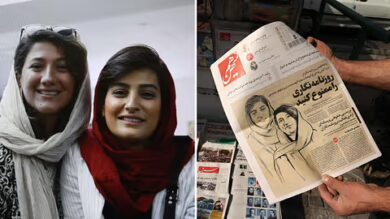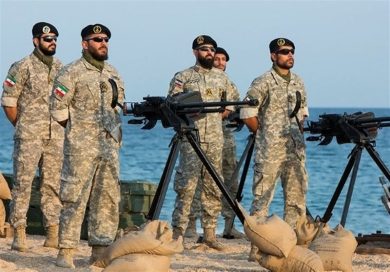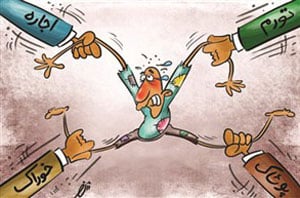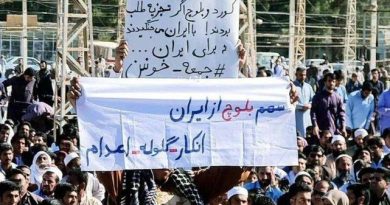The Islamic Revolutionary Guard Corps (IRGC) is one of the most destabilizing forces in the Middle East, using proxy militias, financial support, and arms smuggling to extend Iran’s influence and wage asymmetric warfare. Through its Quds Force, the IRGC has built a vast network of militant groups across Lebanon, Syria, Iraq, Yemen, and the Palestinian territories, fueling sectarian violence, prolonging wars, and undermining regional stability. While Iran claims its actions are for defense and resistance, the IRGC’s strategy is designed to expand Tehran’s regional dominance by funding terrorist groups, attacking Western and allied interests, and threatening U.S. and Israeli forces.
This report examines the IRGC’s role in proxy wars, its key partners in the region, and the consequences of its aggressive military expansion.
1. What Are IRGC Proxy Wars?
Instead of engaging in direct military conflict, the IRGC funds and arms proxy militias to fight on Iran’s behalf. This strategy allows Iran to:
• Avoid direct war with powerful adversaries like the U.S., Israel, and Gulf states.
• Destabilize rival governments while maintaining plausible deniability.
• Expand Iran’s influence in key regions by controlling armed groups.
The IRGC Quds Force, its elite foreign operations unit, leads these proxy wars by training, funding, and directing terrorist groups across the Middle East.
2. The IRGC’s Key Proxy Groups and Their Role in Regional Conflicts
The IRGC supports multiple armed groups, turning them into extensions of Iran’s military strategy. These proxies are involved in terrorism, insurgencies, and military operations, targeting U.S. forces, Israeli civilians, and Sunni Arab governments.
A. Hezbollah (Lebanon)
• The IRGC’s most powerful proxy, Hezbollah is a paramilitary and political group that controls parts of Lebanon.
• Annual IRGC funding: Estimated $700 million.
• Key activities:
• Launching rockets at Israel and waging cross-border attacks.
• Fighting for Assad in Syria, committing war crimes.
• Smuggling weapons across the Middle East.
• IRGC’s role: Training, arms supply, intelligence sharing.
B. Iraqi Militias (PMF – Popular Mobilization Forces)
• Iran backs multiple Shia militias in Iraq, some of which attack U.S. troops and embassies.
• Key IRGC-linked groups:
• Kata’ib Hezbollah – Conducts drone and rocket attacks on U.S. bases.
• Asa’ib Ahl al-Haq – Engages in assassinations and kidnappings.
• Harakat al-Nujaba – Sends fighters to Syria to support Iran’s interests.
• IRGC’s role: Weapons, intelligence, and political control over Iraq’s security sector.
C. Syrian Regime and Militias
• The IRGC deployed thousands of fighters to prop up Bashar al-Assad, helping him crush opposition forces.
• Iranian-backed militias like Liwa Fatemiyoun (Afghan fighters) and Liwa Zainabiyoun (Pakistani fighters) operate under IRGC command.
• Key IRGC activities:
• Massacres of civilians in Aleppo and other war zones.
• Weapons shipments through Syria to Hezbollah in Lebanon.
• Expanding IRGC bases near Israel’s border to attack Israeli targets.
D. Hamas and Palestinian Islamic Jihad (Gaza)
• Iran funds Hamas ($100M annually) and Islamic Jihad ($70M annually) to attack Israel.
• Key activities:
• Rocket barrages against Israeli civilians.
• Terror tunnels to infiltrate Israel.
• Collaboration with Hezbollah for larger regional operations.
• IRGC’s role: Supplying missiles, technology, and training.
E. Houthis (Yemen)
• The IRGC provides missiles, drones, and military advisers to the Houthis, who attack Saudi Arabia and the UAE.
• Key activities:
• Launching ballistic missiles and drones at Saudi oil facilities.
• Blocking humanitarian aid to Yemenis.
• Threatening Red Sea shipping lanes.
• IRGC’s role: Smuggling weapons, cyber warfare, and strategic planning.
3. IRGC Tactics in Proxy Wars
The IRGC uses a combination of military, financial, and intelligence strategies to support its proxies and expand influence.
A. Smuggling Weapons and Missiles
• The IRGC moves advanced missiles, drones, and explosives through secret land, sea, and air routes.
• Key smuggling routes:
• Iraq-Syria-Lebanon corridor (land-based).
• Red Sea shipping to Yemen.
• Underground tunnels into Gaza.
B. Cyber Warfare and Propaganda
• The IRGC funds disinformation campaigns to spread propaganda and destabilize governments.
• Targets Western media, social media platforms, and foreign elections to create instability.
C. Targeting U.S. and Israeli Interests
• The IRGC orchestrates drone, missile, and cyberattacks on U.S. bases and allies.
• Proxy groups act as frontline forces to harass and intimidate U.S. military personnel.
4. The Consequences of IRGC Proxy Wars
The IRGC’s support for proxy militias has led to devastating consequences for the region, including:
A. Humanitarian Crises
• Hundreds of thousands of civilians killed in conflicts fueled by Iran-backed militias.
• Millions of refugees and internally displaced people in Syria, Yemen, and Iraq.
B. Regional Instability
• Lebanon’s government is dysfunctional due to Hezbollah’s control.
• Iraq struggles with constant militia violence undermining democracy.
• Yemen’s civil war continues, worsening famine and disease.
C. Global Security Threats
• IRGC proxies launch attacks on oil facilities, shipping routes, and embassies, affecting global markets.
• IRGC arms proliferation spreads Iranian weapons worldwide, from Latin America to Africa.
5. How the International Community is Responding
A. U.S. and Western Sanctions on IRGC and Proxies
• The U.S. designated the IRGC as a Foreign Terrorist Organization (FTO) in 2019.
• Sanctions target Hezbollah, Iraqi militias, the Houthis, and Hamas.
B. Military and Cyber Countermeasures
• U.S. and Israel conduct airstrikes on IRGC-linked weapons depots in Syria.
• Western nations increase cyber defenses against IRGC hacking threats.
C. Gulf States Strengthening Regional Alliances
• Saudi Arabia and the UAE have taken stronger military action against the Houthis.
• Arab states are working with Israel on regional security pacts to counter Iran’s influence.
Conclusion: Stopping the IRGC’s Proxy War Strategy
The IRGC’s proxy war network has destabilized the Middle East, creating endless conflict, humanitarian crises, and global security risks. Stopping Iran’s use of terrorist militias requires:
1. Stronger international sanctions to cut off IRGC funding.
2. More aggressive enforcement against weapons smuggling.
3. Supporting opposition groups and democratic movements inside Iran.
4. Strengthening military alliances to defend against IRGC threats.
Join Our Newsletter!
Stay informed with the latest updates, news, and ways to take action in the fight for justice and global security. Sign up now to get updates delivered straight to your inbox!





